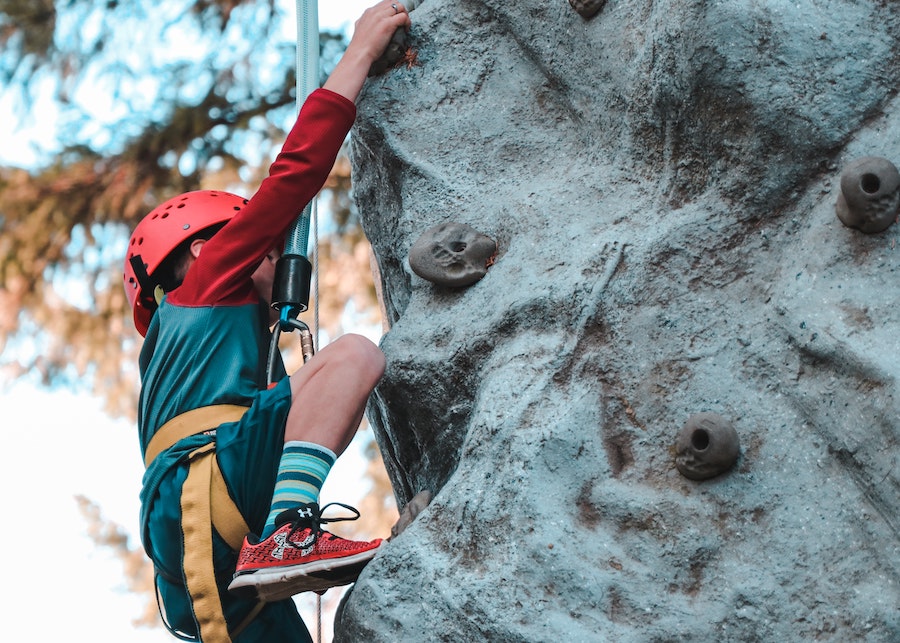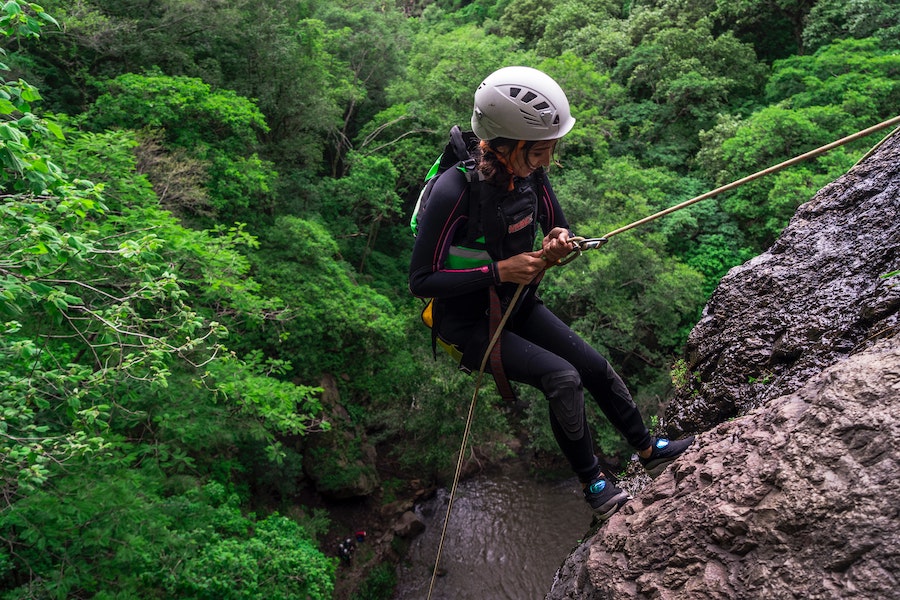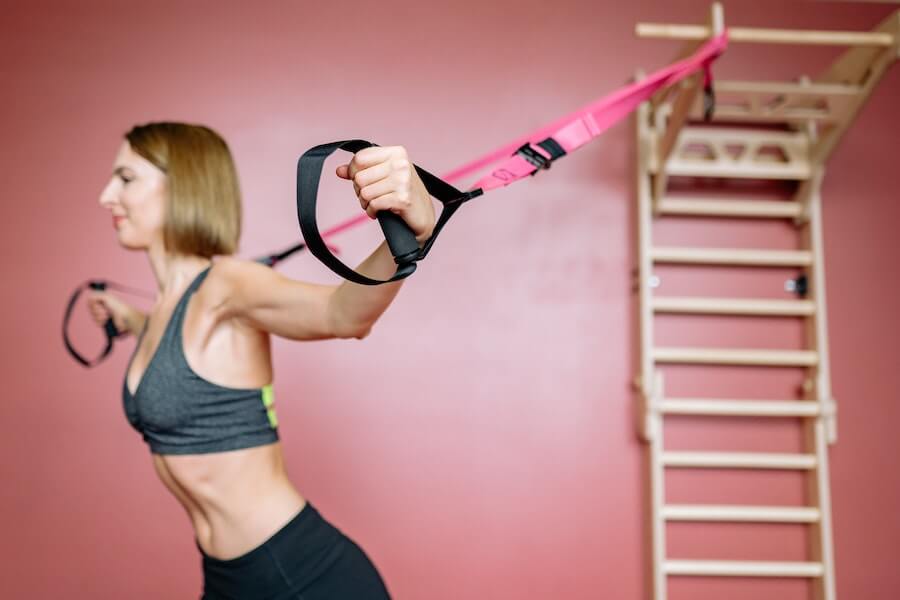Climbing is a sport that provides a unique sense of accomplishment by pushing individuals to test their physical and mental limits. Rock climbing has gained immense popularity in recent years.

As more people have been attracted to climbing, injury rates have also increased. A study indicates that 67% of climbers suffer from injuries.
And out of these injuries, 93% are related to upper limbs that are climbing shoulder injuries. This makes it essential for climbers to understand the risks associated with shoulder injuries and take proactive measures to protect and maintain their shoulder health.
From beginners to professionals, climbing shoulder injuries are common among climbers of all levels. In this article, we aim to provide the climber with the necessary knowledge for identifying, preventing, and addressing shoulder injuries associated with climbing.
By the end, we will ensure you have all the necessary information to maintain healthy shoulders throughout your climbing journey.
Understanding Climbing shoulder injuries
Climbing shoulder injuries are conditions that affect the around and within the shoulder joint. Repetitive and demanding climbing movements are their basic cause.
Types of climbing shoulder injuries
Climbing shoulder injuries are further classified into four types. These include:
- Rotator cuff tears: The rotator cuff is a group of shoulder muscles and joints. Their overuse can cause tears and degeneration, eventually leading to shoulder injuries.
- Shoulder Impingement Syndrome: This condition involves compression of shoulder tendons resulting in pain, inflammation, and restricted movement.
- Dislocated shoulder: Dislocation occurs when the upper arm bone leaves its socket in the shoulder joint. This usually happens due to a sudden fall.
- AC joint sprains: Acromioclavicular is a joint at the top of the shoulder. A forceful arm movement across the body or a sudden fall can injure this joint.
Common Causes of Climbing Shoulder Injuries
Understanding the common causes of climbing shoulder injuries is crucial to avoid these injuries. From faulty gears to poor techniques, many factors may cause these injuries.
Below are explained some of the most common causes of climbing shoulder injuries.
Overuse and repetitive motion
Climbing involves repetitive actions, including pulling, griping, and reaching. This puts a significant strain on shoulder muscles and related joints.
Continuous stress without recovery and proper rest eventually leads to muscle imbalances, inflammation, and tendonitis, increasing the risk of climbing shoulder injuries.
Poor body positioning and climbing techniques
Poor climbing techniques and body positions are the primary causes of climbing shoulder injuries. Poor body positioning, such as excessively internally rotated shoulders and poor techniques, places an extra burden on shoulders.
This leads to overloading and increases the chances of potential shoulder muscle injuries.
Limited stretching routines and warm-up exercises
Stretching routines and warm-up exercises prepares muscles, tendons, and ligaments for the physical demands of climbing.
Thus the limited number of these exercises makes shoulder muscles less flexible and more prone to tears, strains, and other injuries.
Faulty gears
Equipment-related factors are also a major contributor to climbing shoulder injuries. Ill-fitting gears are an excellent example of this. They put uneven pressure on the shoulder, restrict movements, and increase the chances of shoulder injuries.

Additionally, worn-out gear like frayed ropes compromises your safety by increasing the chances of accidental falls.
Symptoms of Climbing Shoulder Injuries
It is crucial to identify climbing shoulder injuries and not ignore them as normal muscle fatigue. Turning a blind eye to these symptoms can worsen the injuries, eventually leading to prolonged recovery times.
Below is a detailed discussion about the common symptoms of climbing shoulder injuries.
Pain and discomfort in the shoulder Area
Pain and discomfort in the shoulder area are one of the most common symptoms of shoulder injuries. The intensity of pain varies from mild to severe. It can be present both during climbing and at rest.
The sensations could be felt throughout the arm or even up to the neck. If it’s worsening or persistent, it’s important to pay attention.
Limited motion and difficulty in movements
Difficulty in arm movements and limited motions are common results of climbing shoulder injuries. Shoulder flexibility is reduced, and individuals suffer stiffness in joints. It isn’t easy to perform movements like raising the arm above the head, shoulder rotation, and arm’s reach across the body.
Visible signs
Swelling and inflammation are visible signs of climbing shoulder injuries. Swelling could be around the shoulder joint. Upon touching, it may feel warmer. Inflammation can cause redness over the injured area.
In more severe cases, bruising or dislocated shoulder may be visible.
Diagnosis and treatment options for climbing shoulder injuries
Many treatment options for climbing shoulder injuries are available, from physical therapies to surgical interventions. The suitability of each treatment plan depends on individual preferences, injury severity, and type of injury.
Before opting for any treatment, a diagnosis by a professional is crucial. In case you notice any symptoms, it is advised to consult an orthopedic surgeon or sports medicine physician. They are more informed and have specialties in treating climbing shoulder injuries, thus can provide an appropriate diagnosis.
Below discussed are various treatment plans for climbing shoulder injuries.
Non-surgical treatment options
Almost every climber suffering from climbing shoulder injuries prioritizes non-surgical treatment. Non-surgical treatment options include:
- Rest: Natural healing is indeed the best option for treating shoulder injuries. Take a break from climbing, and allow the injured shoulder to heal. This will reduce inflammation and prevents any further damage.
- Physical therapy: If natural healing is not giving satisfactory outcomes, working with a physical therapist can cultivate effective results. They can devise a special program for your injury, shoulder strength, and flexibility.
- Medication: Non-steroidal anti-inflammatory drugs (NSAIDs) are recommended for treating climbing shoulder injuries. These drugs manage pain and reduce inflammation. However, it’s important to consult a health professional before their use.
Surgical treatments
In severe cases of climbing shoulder injuries, surgical interventions are necessary. The common surgeries for treating shoulder injuries include rotator cuff repair, labral repair, and stabilization of dislocations.
After surgery, a comprehensive rehabilitation program is necessary to regain strength, mobility and to ensure an effectively functioning shoulder joint.
How to prevent climbing shoulder injuries
Prevention is the key to long-term injury-free climbing. By implementing preventive measures, climbers can reduce the chances of climbing shoulder injuries and boost the climbing experience.
Below given are preventions that can effectively help you against climbing shoulder injuries.
Follow the proper warm-up exercise.
A thorough warm-up comes with many benefits. It boosts shoulder muscle flexibility, increases blood flow, and prepares the shoulder for climbing demands.
Recommended stretches for shoulder joints include arm circles and shoulder rotations.
Strengthening exercises for shoulder muscles
Incorporation of strengthening exercises can make your shoulder strong, ultimately reducing climbing shoulder injuries.
Focus on the exercises that target rotator cuff muscles. Exercises like dumbbells and resistance bands are recommended to boost shoulder strength.

Correct body positioning
Effective techniques with correct body positioning are vital for preventing climbing shoulder injuries. For this, learn efficient movement patterns, proper hand-foot placements, and body positioning that minimizes shoulder pressure.
Use of appropriate gear and Recovery periods
Proper gear that adequately supports weight distribution is important to prevent climbing shoulder injuries. It is advised to inspect your gear regularly. Well-maintained ropes and carabiners can reduce the chances of any potential falling accidents.
Furthermore, rest and recovery periods can effectively prevent overuse injuries. Incorporate rest days in your training schedule. Proper nutrition, adequate sleep, and hydration are vital in promoting optimal recovery.
The Bottom Line
Climbing shoulder injuries are common among climbers. But a proper understanding of these injuries and prevention approaches can reduce their chances. By recognizing causes and symptoms, climbers can take proactive measures to maintain their shoulder health.
Prioritize learning effective climbing techniques, use appropriate gear, and follow good warm-up routines. By incorporating these practices, climbers can enjoy the sport they love with reduced chances of climbing shoulder injuries.

When I was in high school, I was the best at running. Running for me is not a trend, this is my whole life. I jog every morning, without exceptions: I don’t skip mornings on vacations or business trips. My friends are also sports fans: I went to my best friend’s yoga class for the first time about three years ago.
Since then, I’ve been practicing regularly, and we have also made several yoga trips to India. For my last birthday, I got a skateboard as a present from her. Now we’re both taking personal classes with a coach, and it’s 100% fun!





